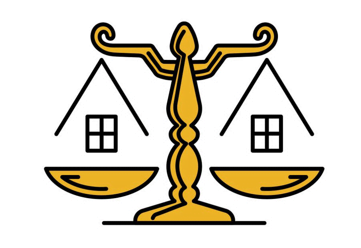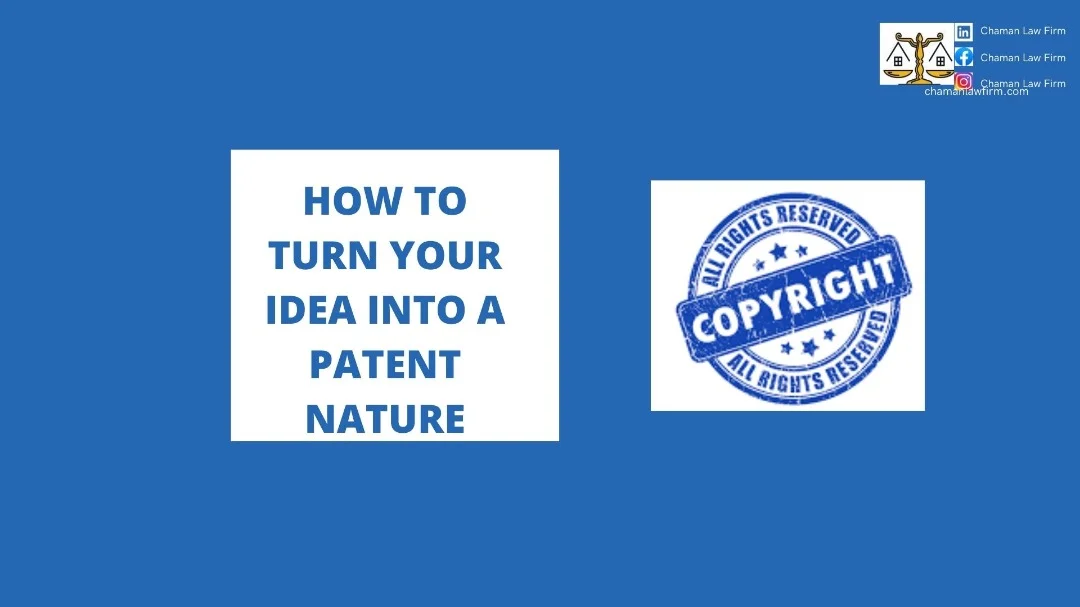OUR STORY
Quality, not quantity
We have made quality our habit. It’s not something that we just strive for – we live by this principle every day.
HOW TO TURN YOUR IDEA INTO PATENT
Before a company can start selling a product, it must protect its intellectual property (IP) by patenting the technology that makes it special. Inventions are born out of ideas of the inventors who desire to solve a particular problem or problems. One fear of an inventor is that such idea would be stolen by another. The question therefore is what can an inventor do to protect his ideas from being stolen?
One important thing to note however is that it is impossible to patent or copyright an idea. Copyright is a legal right that gives the inventor the exclusive right to use such product as he desires. However, the work must be new and unique to the inventor to be eligible to be copyrighted or patented.
So, for a work to be patented, it must be in a form that can be expressed and not just in the form of an idea. An idea cannot solve any problem, it cannot meet anyone’s needs until those ideas are utilized to produce a work of art that can actually solve problems. This is so because it would be absurd for a person to claim patent rights over something he just thought up in his head when that though has not been expressed. So a person cannot also claim patent rights over another person’s product simply because he thought of producing such product first.
However, all hope is not lost as such an idea can be patented when it is expressed. Therefore, the question now is how can an expressed idea be patented? The very first thing an inventor has to do is to speak to a lawyer especially one knowledgeable in IP Law about his product. The lawyer would ensure that the product fits the criteria for a product that can be patented, he would also advice the inventor accordingly and provide protection for the product.
The applicant has to ensure the invention has not already been patented. He an do this by carrying out a search. Whether the idea on which the patent is sought is a product or process, the same registration procedure is needed. If the search shows that the product has already been patented, then the application for a patent will go thus:
A petition is made for a patent signed by the applicant or his agent. The petition must contain the applicant’s full name and address; ·
Claim or Claims and specification that state the process or product to be protected ·
A declaration signed by the true inventor requesting that (s)he be mentioned as such in the patent. It must also state the name and address of the true inventor
Must include a signed power of attorney or authorization of agent (if the application is made by an agent)
If the true inventor is outside Nigeria, it must include the address for service in Nigeria
Payment of the prescribed fee
The inventor can then proceed with the process of applying for a patent before speaking with investors.
Before a product can be patented, it must fit some criteria. They are: · The product must be new and must be unique from any other product. · The product must be an invention that is not obvious to someone with basic knowledge on the subject and must not have similarity with an already existing product. · Must be capable of being used in a particular sector or sectors. · Must not be against public policy or morality and is not out rightly excluded in the law of Nigeria. · Has a service address in Nigeria.
Once a product fits the criteria above, it can be patented. What then are the processes involved in patenting a product?
FILL APPLICATION FORM AND WRITTEN DECLARATION
There are two types of application forms for patent registration;
Form 1A:
This application form is for the registration of a conventional/local patent. It is the form for local applications for products invented and originating in Nigeria. The name, address, email address and contact number of the applicant is to be provided and in cases of multiple/joint inventors or inventors under the employ of a company, the name, address, email and contact number of a representative of the company or the joint inventors will be needed. A declaration by the true inventor will be needed to be submitted with the application form and Form 3 . The true inventor is the individual responsible for the ideation of the invention.
Form 1B:
This application form is for the registration of a non-conventional/international patent. It is the applicable form for applicant seeking to register inventions which were not created in Nigeria and which is already registered in another foreign country. The application will be submitted alongside written declaration consisting of: the date and the number of the earlier application; the country in which such application was made, and the name of the inventor who made it.
The applicant will also fill a Form 3 to be submitted alongside the Form 1B and the written declaration. The applicant will be required to furnish the Registrar with a copy of the earlier application certified by the appropriate industrial property office of the foreign convention country within 3 months of filling the application.
STEP TWO: FILL THE SPECIFICATION FORM (FORM 3)
All Applicants (Local or Foreign) are required to fill Form 3 – Complete Specification Form.
Form 3 is very important to any Patent application; it specifies a detailed description of the invention and its claims (a claim is any information showing the innovation of the invention provided by the applicant in hopes of creating an extent/scope of protection for the said invention from infringement by a subsequent invention). The applicant would have to explain in the technical terms what makes the invention unique from already existing products available in hopes to protect it from subsequent inventions.
The contents of Form 3 would include: the title of the invention; an abstract on the functionality of the invention; background and history of the invention; detailed description of the invention supported with diagrams and illustrations; claims (starting from general claims to specific ones), and summary of what society/ mankind stands to gain from the invention.
STEP THREE: SUBMIT APPLICATION TO THE REGISTRY AND PAY OF APPLICATION FEES
The Applicant will have to pay the application fee as may be advised by the Registrar from time to time and submit application forms along with the evidence of payment of the prescribed fees.
STEP FOUR: APPLICATION IS GRANTED AND PATENT IS VALID FOR 20 YEARS
After submission of all the required documents and payments are made, the patent application is examined by the Registrar to confirm formal compliance, the Registrar assumes regularity. Once the application has fulfilled the statutory requirements as to the completion of form, payment of appropriate fees amongst others, the Registrar can grant the patent without enquiries into its novelty, inventiveness and industrial applicability or sufficiency of disclosures in Form 3.
Patents are granted at the risk of the patentee and without guarantee as to their validity. Once granted, a patent is valid for 20 years.
According to the Nigerian Law, if an application for a patent is made in Nigeria within 12 months of the making an earlier application in a foreign country, that application will be treated as if made on the same date the foreign application was made.
In Conclusion, an inventor can always patent his invention provided that such invention is not just a mere idea but has been expressed and is unique. Fortunately, the process is straight forward and once done, an inventor has temporary exclusive right to use the product as he pleases.
NB: This article is not a legal advice, and under no circumstance should you take it as such. All information provided are for general purpose only. For information, please contact chamanlawfirm@gmail.com
WRITTEN BY CHAMAN LAW FIRM TEAM
EMAIL: chamanlawfirm@gmail.com
TEL: 08065553671, 08024230080


